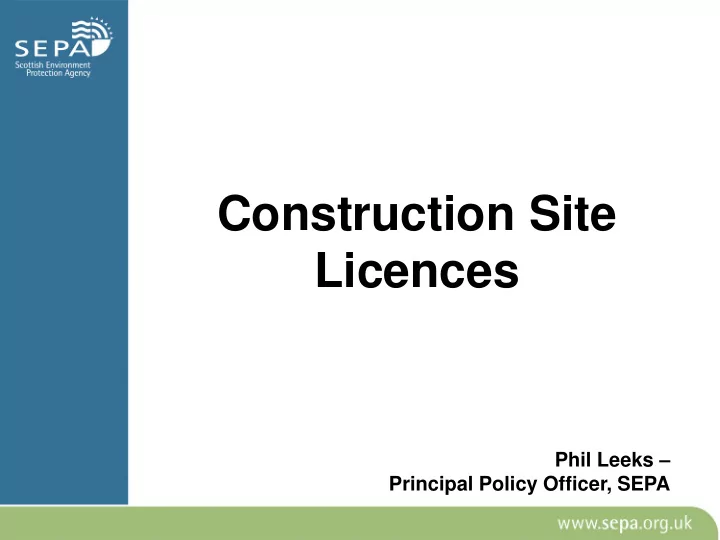

Construction Site Licences Phil Leeks – Principal Policy Officer, SEPA
Workshop • Construction SUDS Workshop • Explanation of environment being protected on construction sites • Highlight generic solutions • What happens when it goes wrong • Regulations • Pollution Prevention Plans • Case studies
Environment on a Construction Site • Soil • Resource • Geology • Rivers • Geomorphology process moves sediment down river • Sediment from construction sites causes smothering • Rain • In Scotland it rains – a lot!
Environment on a Construction Site
Solutions • Solutions can be simple and/or technical • Reduce amount of exposed soils • Reduce amount of surface water run-off • Reduce chance of soil mixing with run- off • Treat sediment laden run-off • Attenuation • Swales • Pump solutions etc.
Going wrong Silt in D&G
Going wrong
Going wrong
Going wrong
Going wrong MORE PHOTOS
WHY ARE WE DOING IT?
RANGE OF ACTIVITIES The requirements for a licence will be where a construction site, including any constructed access tracks: has an area of 4 hectares or more; a length of 5 km or more; or includes any area of more than 1 hectare or any length of more than 500 metres on ground with a slope in excess of 25°. Below this level the activity will be regulated via the GBR.
RANGE OF ACTIVITIES GBR10b Know how your sites works and how you are controlling the run-off to prevent sediment going into the river Construction SUDS Licence Application to SEPA Write a Pollution Prevention Plan Keep the Pollution Prevention Plan up- to-date Work on site as described in the Pollution Prevention Plan
Pollution Prevention Plan • What land? • What construction activity? • Point of Contact • Identify pollution risks • How are you preventing pollution? • Managing the water run-off • What if something goes wrong? • How do you know your Pollution Prevention Plan is effective and being adhered to? • Who is in charge of making the plan work?
Tracks Example route map. Brown = track at >3km and 4m wide; light brown = passing places (indicative only); grey – borrow pit; red = freshwater SSSI; green = Geological SSSI; blue square = water crossing; orange circle = deep peat/blanket bog; light green circle = pollution risk area.
Pipes
Housing
Questions and Answers
Recommend
More recommend